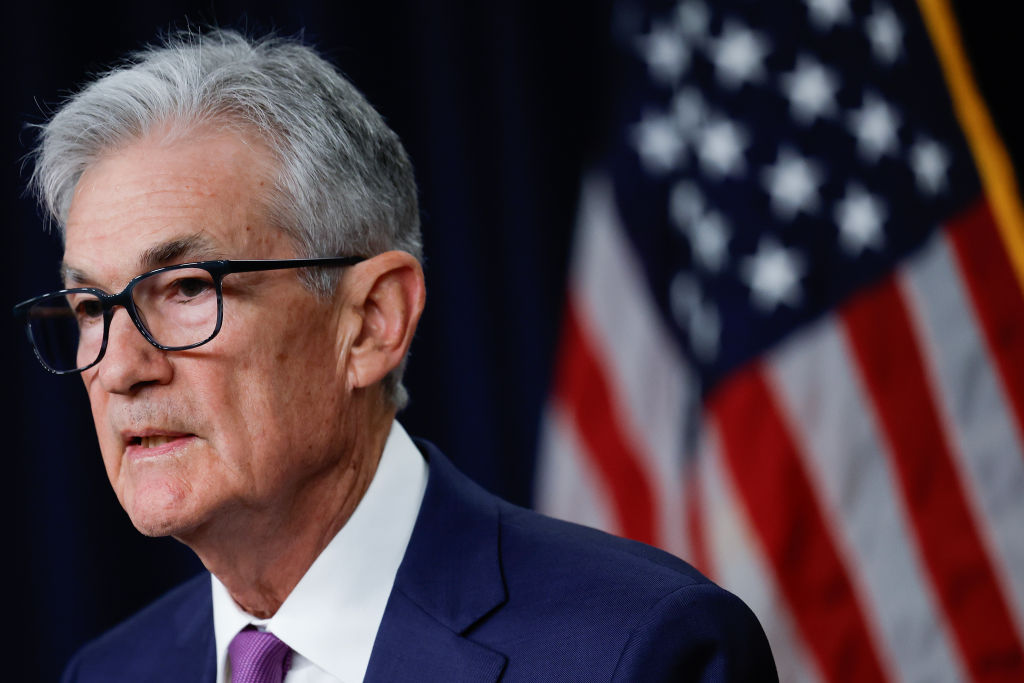Should Investors Brace for Late-Summer Volatility?
Many market strategists are predicting a shaky next few months of market action. Here's how to mentally steel yourself.


The stock market is well on its way to an above-average performance for 2021. The S&P 500 has gained 18% for the year to date, while the Dow Jones Industrial Average and Nasdaq Composite have improved by just a little more than 15%.
That climb hasn't come in a perfectly straight line, however, and stocks could be in for a couple shaky months – at least if seasonality has to say anything about it.
Here are a few quick tips for how investors should prepare themselves for what some are predicting could be a volatile August-October period:

Sign up for Kiplinger’s Free E-Newsletters
Profit and prosper with the best of expert advice on investing, taxes, retirement, personal finance and more - straight to your e-mail.
Profit and prosper with the best of expert advice - straight to your e-mail.
#1: It's time to get your head in the game after a sleepy summer.
The stock market is entering what is usually one of its toughest three-month stretches of the year.
August tends to be a weak month when July is quiet. September has been the S&P 500's worst month on average. And October has been the S&P 500's most volatile month on average. Plus, investors seem extra nervous about growth and a pandemic resurgence these days, which could lead to risk aversion.
Put it all together, and the market looks primed for a pullback.
#2: At the same time, seasonality isn't a guarantee, and this market has proven to be resilient.
The S&P 500 hasn't dropped 5% or more in almost 10 months – an unusually long time without a sizable selloff. And the S&P 500 is poised for just its third summer in history when it hasn't fallen 3% or more below a record high from June to August.
#3: Calm stretches like this can last for a while.
Especially with above-average growth and a supportive Fed.
#4: Don't fall victim to gambler's fallacy by thinking the market is due for a big drop just because it hasn't done so in a while.
Staying out of the market could be more risky than staying in, as we've seen for the past year and a half.
#5: If stocks drop, try cognitive reframing.
Wise investors view pullbacks as stocks on sale instead of times to panic. Why? Because markets go up and down. That's just the natural rhythm of investing. That's why the S&P 500 has clocked 8% average annual returns since 1950, even after enduring 32 drops of 10% or more over that period.
Your brain's risk compensation may tell you to run, but the risk could end up working in your favor.
Callie Cox is Ally Invest's senior investment strategist. Her opinions do not necessarily reflect those of Kiplinger's.
Profit and prosper with the best of Kiplinger's advice on investing, taxes, retirement, personal finance and much more. Delivered daily. Enter your email in the box and click Sign Me Up.

-
 Investing Abroad Could Pay Off — Here's How
Investing Abroad Could Pay Off — Here's HowCountries overseas are stimulating their economies, and their stocks are compelling bargains.
-
 Retire in Belize for Stunning Natural Beauty and Culture
Retire in Belize for Stunning Natural Beauty and CultureBelize offers miles of protected land and ocean, a rich mix of cultures and a chill lifestyle. Best yet — the income requirement is just $2K per month.
-
 My Three-Day Rule for Investing: And If it Applies Now
My Three-Day Rule for Investing: And If it Applies NowStock Market I've seen a lot in my career. Here's what I see now in the stock market.
-
 Is It Time to Invest in Europe?
Is It Time to Invest in Europe?Stock Market Europe is being shaken out of its lethargy, militarily and otherwise, by Donald Trump's changes in U.S. policy. Should investors start buying?
-
 Why Is Warren Buffett Selling So Much Stock?
Why Is Warren Buffett Selling So Much Stock?Berkshire Hathaway is dumping equities, hoarding cash and making market participants nervous.
-
 If You'd Put $1,000 Into Google Stock 20 Years Ago, Here's What You'd Have Today
If You'd Put $1,000 Into Google Stock 20 Years Ago, Here's What You'd Have TodayGoogle parent Alphabet has been a market-beating machine for ages.
-
 Stock Market Today: Stocks Retreat Ahead of Nvidia Earnings
Stock Market Today: Stocks Retreat Ahead of Nvidia EarningsMarkets lost ground on light volume Wednesday as traders keyed on AI bellwether Nvidia earnings after the close.
-
 Stock Market Today: Stocks Edge Higher With Nvidia Earnings in Focus
Stock Market Today: Stocks Edge Higher With Nvidia Earnings in FocusNvidia stock gained ground ahead of tomorrow's after-the-close earnings event, while Super Micro Computer got hit by a short seller report.
-
 Stock Market Today: Dow Hits New Record Closing High
Stock Market Today: Dow Hits New Record Closing HighThe Nasdaq Composite and S&P 500 finished in the red as semiconductor stocks struggled.
-
 Stock Market Today: Stocks Pop After Powell's Jackson Hole Speech
Stock Market Today: Stocks Pop After Powell's Jackson Hole SpeechFed Chair Powell's Jackson Hole speech struck a dovish tone which sent stocks soaring Friday.